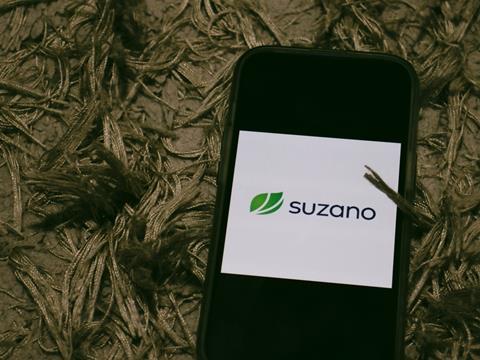
Suzano is investing R$490 million – the equivalent of over €90 million – into a new line for eucalyptus-based and bleached hardwood kraft pulp, aiming to produce 340,000 additional tons of fluff pulp and enhance the sustainability credentials of various personal hygiene products.
A BHKP pulp line at its Limeira mill is set to be converted into a flex machine to produce bleached hardwood kraft pulp (BHKP) and Suzano’s Eucafluff. Production is expected to begin by Q4 2025, at which point the line’s current installed capacity of fluff pulp production is expected to rise from 100,000 tons to 440,000 tons.
Eucafluff is described as the ‘world’s first’ bleached kraft fluff pulp made from 100% planted eucalyptus. Suzano emphasizes that it is among the list of raw materials authorized for use in disposable personal care products in compliance with the EU Ecolabel and Nordic Swan labels – which recognize reduced carbon emissions, land use, and consumption of fossil energy and water.
According to studies and market tests, Eucafluff’s benefits include liquid retention, comfort, and discretion. Suzano anticipates that an additional production line will help the company meet increasing global demand and enhance standards of sustainability for feminine hygiene, pet pads, baby and adult diapers, and other personal hygiene products.
Currently, the fluff market is estimated to reach 6.4 million tons worldwide, and independent consultants forecast a CAGR of 4.2% in the coming years. This is attributed to a growing consumption of adult diapers among an aging population and, increasingly, the global middle classes.
“Suzano is committed in investing in innovative solutions which have a positive environmental impact, bring cost efficiency, and which are scalable businesses,” commented Leonardo Grimaldi, executive officer – Commercial Pulp, Fluff and Logistics at Suzano. “Eucafluff is a perfect example of this.
“Following many years of R&D, we have been able to pioneer the use of fluff made from planted eucalyptus, which has characteristics that enhances multiple features of our customers’ products. Ongoing projects with several global customers and rising demand for Eucafluff has made us confident that now is the right time to scale up our production.”
Chemolex’s Biopactic solution takes invasive water hyacinth plants from Lake Victoria in Kenya and converts them into a recyclable, reusable, and biodegradable bioplastic material. Alongside packaging applications, it is used to produce diapers and sanitary pads, and the company’s efforts were recently recognized with funding via the Afri-Plastics Challenge.
Similarly, the European BeonNAT project has apparently cultivated biomass from organic materials like poplar, elm, birch, and other organic materials and produced bioplastics for bioactive cosmetics, biochar, activated carbon, and pet litter with essential oils.
Releaf Paper has also announced its Fallen Leaf and Natural Kraft collections. These include bags and paper sheets made using fallen leaves, negating the need to fell trees while producing a recyclable and biodegradable material.
If you liked this article, you might also enjoy:
The L’Oréal approach to packaging sustainability
What steps is Apple taking to make its packaging more sustainable?
How did Brazil achieve its 100% aluminium can recycling rate – and can it be replicated in the EU?
Experts have their say on the EU’s Packaging and Packaging Waste Directive revisions
Also, if you’re interested in packaging sustainability, you will want to attend our Sustainable Packaging Summit in Amsterdam on 14-15 November. The Summit brings together leaders and pioneers from across the industry to align strategically, learn, network, and create a critical mass to accelerate change. You can learn more by clicking here, and you can buy a ticket to attend here.


















No comments yet